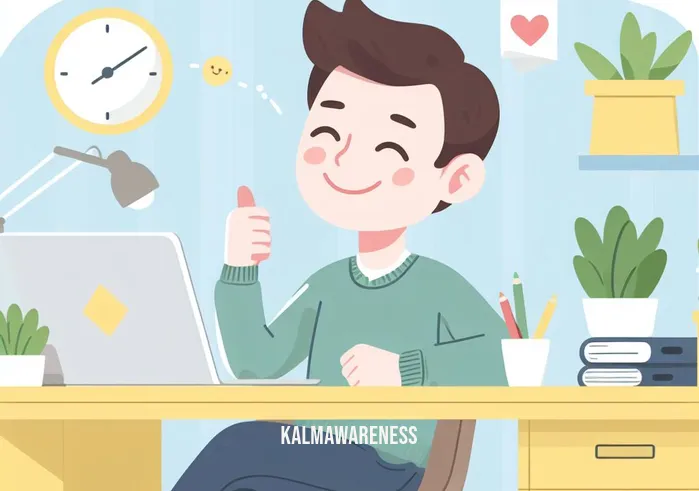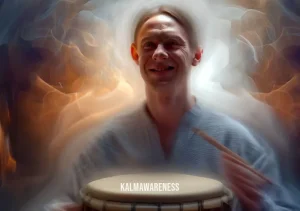An Introduction to the Mindfulness Chart: Charting Your Path to Better Mental Health
In today’s fast-paced world, there’s a profound need for inner stillness and a sense of grounding. The mindfulness chart serves as a beacon, illuminating the path toward greater self-awareness, enhanced mental health, and improved productivity. As an intricate tool that combines aspects of meditation, visualization, and self-reflection, it’s designed to guide individuals through the labyrinth of their mind. Let’s embark on this transformative journey, shall we?
What is a Mindfulness Chart?
The concept of mindfulness isn’t new. Rooted in ancient traditions, it centers around being present and fully engaged in the here and now. A mindfulness chart is a visual representation of one’s mental and emotional state. By charting out emotions, thoughts, and feelings, individuals gain insight into their inner workings, allowing them to understand patterns and make informed decisions for their mental well-being.
The Importance of Mindfulness in Today’s World
Every day, our minds are bombarded with countless stimuli—from work-related tasks to personal responsibilities, and from the global news cycle to social media notifications. Amidst this cacophony, the significance of mindful skills becomes evident. By adopting a mindful approach, we can filter out the noise and tune into our authentic selves, making space for clarity and tranquility.
How Meditation and Breathing Play a Role
Meditation, particularly meditation pleine conscience, emphasizes being in the moment. Through simple techniques like micromeditating or more structured methods like those taught in the Penn Mindfulness Class, individuals can achieve a sense of calm and focus.
Breathing, an essential component of meditation, has profound effects on our psyche. Breathing exercises, often integrated into rouse yoga or even specialized gratitude yoga sessions in Princeton, allow us to reset our mind and body, bridging the gap between the external world and our innermost thoughts.
Visualizing a Better Tomorrow
Visualization, as an offshoot of mindfulness, involves picturing a desired outcome or state of being. For many, this involves visualizing inner peace, harmony, or achieving a particular goal. The Mindful Harmony App, for instance, provides tools for individuals to visualize and manifest their aspirations, promoting a balanced and harmonious existence.
Embracing the Journey Ahead
Mindfulness is more than just a practice—it’s a way of life. As we delve deeper into the nuances of the mindfulness chart in the next segment, we’ll uncover how various methods, from mindful hiking to engaging with mindfulness books for teens, play a pivotal role in shaping our experiences. We’ll also explore the profound wisdom offered by pioneers like Jack Kornfield and discover ways to incorporate mindfulness into daily routines, whether you’re a busy mom seeking mindfulness for moms or a professional looking to consult a meditation consultant.
In the realm of mindfulness, the journey is as significant as the destination. As we venture into the intricacies of the mindfulness chart, we invite you to be present, be curious, and be open to the transformative power of self-awareness.
Ready to deepen your understanding and enhance your mental well-being? Continue reading to explore further dimensions of the mindfulness chart and its profound impact on our lives.
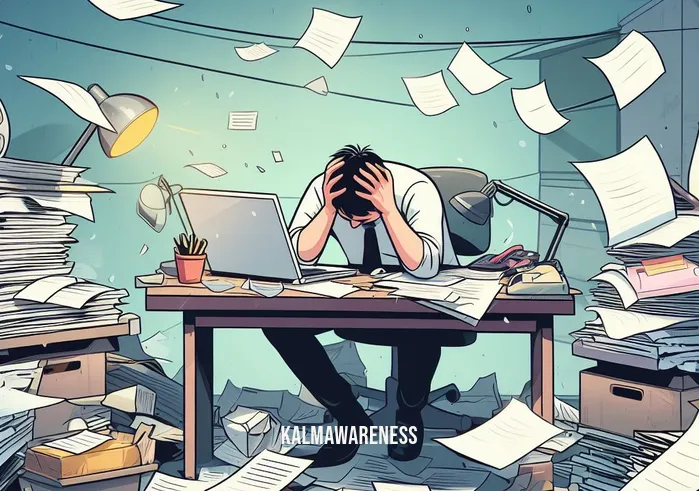
Unveiling the Layers of the Mindfulness Chart: A Comprehensive Guide
The mindfulness chart is more than just a graphical representation of one’s inner state—it’s a roadmap, guiding us toward heightened self-awareness, emotional intelligence, and a balanced mental state. As we dive deeper into its various components, it becomes evident how this chart can be an invaluable tool in our journey toward self-realization and peace.
The Core Components of a Mindfulness Chart
- Emotional Spectrum: Recognizing and acknowledging a range of emotions, from joy and contentment to sadness and anger.
- Cognitive Patterns: Identifying repetitive thoughts or belief systems that may influence our perceptions.
- Physical Sensations: Tuning into the body’s signals, such as tension, relaxation, or energy flow.
- Behavioral Triggers: Recognizing the external factors or situations that may prompt particular emotions or reactions.
- Mindful Interventions: Tools and techniques, such as inside-out personality types or mindful martial arts, to navigate and manage our inner landscape.
How the Mindfulness Chart Enhances Self-Awareness
A mindfulness chart isn’t just a static representation—it’s dynamic, evolving as we grow and change. By routinely referring to and updating our chart, we can trace our emotional and cognitive evolution, offering insights into our patterns and growth areas.
- Pattern Recognition: Over time, charting our experiences can help identify recurring themes or triggers. For instance, noting a pattern of anxiety around certain events can lead to targeted interventions.
- Emotional Regulation: Recognizing our emotional states and their triggers can aid in regulating them, ensuring they don’t overwhelm us.
- Empowered Decision Making: With clearer self-awareness, our decision-making process becomes more aligned with our true desires and aspirations.
- Mindful Responses: Instead of reacting impulsively, we can respond to situations mindfully, drawing from the self-awareness nurtured through our chart.
A Snapshot: The Mindfulness Chart in Action
| Component | Example | Mindful Tool |
|---|---|---|
| Emotional Spectrum | Feeling anxious before a presentation. | Mindful miracle techniques |
| Cognitive Patterns | Believing “I’m not good enough.” | Reflecting with mindfulness books for teens |
| Physical Sensations | Tension in the shoulders when stressed. | Rouse yoga practices to release tension. |
| Behavioral Triggers | Snacking when bored. | Engage in mindful hiking for distraction. |
| Mindful Interventions | Using visualization for emotional grounding. | Utilize the Mindful Harmony App for guided practices. |
Expanding the Horizon with the Mindfulness Chart
But the chart’s utility doesn’t stop at self-awareness. Whether it’s a mother seeking tools from mindfulness for moms or someone looking for structured guidance from a meditation consultant, the mindfulness chart can be customized and adapted to fit various needs.
Incorporating elements like gratitude meditation before sleep or daily reflections using mindfulness intentions can further enrich the chart, making it a holistic tool for growth and self-improvement.
Looking Forward: The Journey Continues
As we’ve seen, the mindfulness chart is not just a mere tool—it’s a companion. A companion that evolves with us, shedding light on the darkest corners of our psyche and guiding us towards a more mindful existence. But there’s more to explore. In the next chapter, we’ll delve into the practicalities—how can you create your own mindfulness chart? And more importantly, how can you integrate it seamlessly into your daily life?
Stay with us, as we continue this transformative journey toward a more mindful and fulfilling life.
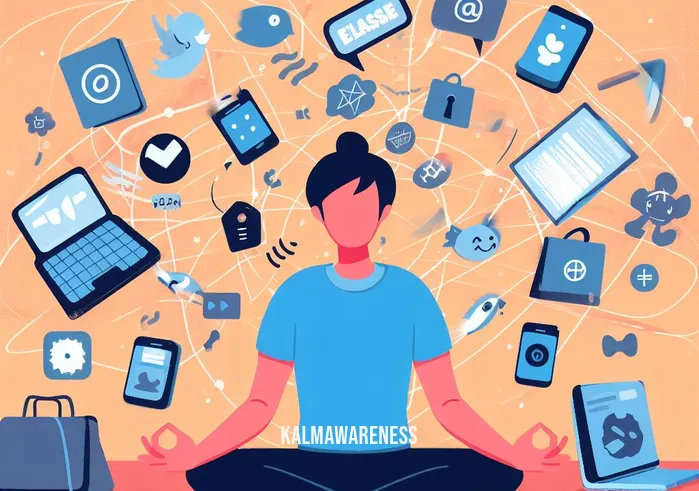
Charting Hope: Drawing Inspiration from the Mindfulness Chart
The journey of self-awareness, guided by the mindfulness chart, is akin to navigating a vast ocean. While the chart provides the direction, hope is the wind in our sails, propelling us forward. Delving deeper, we realize that the act of charting our emotions, beliefs, and behaviors can be profoundly transformative, offering hope and inspiration even during life’s most challenging moments.
Voices of Wisdom: Quotes to Inspire Mindful Living
In the world of mindfulness, we’re fortunate to have been guided by luminaries who’ve left behind pearls of wisdom. These words aren’t just sayings but beacons, illuminating our path:
“In the present moment, we find true life.” – This saying emphasizes the ethos of the mindful miracle, urging us to embrace the present, the only tangible reality.
“Simple meditation techniques can be profound.” – Echoing the philosophy behind meditation made simple, this quote reminds us that sometimes, simplicity holds the key to profound transformations.
“Gratitude turns our gaze inward, revealing the richness of the soul.” – Aligned with practices like gratitude meditation before sleep, this quote emphasizes the power of gratitude in nurturing a rich inner life.
Real-life Tales: Finding Hope Through Mindfulness
Sarah’s Journey: A young professional, Sarah found herself overwhelmed by the demands of her job. Burnt out and anxious, she turned to the Mindful Harmony App in search of solace. By using a mindfulness chart to map out her emotions and triggers, she started identifying patterns. This recognition led her to adopt keep it simple meditations, which proved transformative. Today, Sarah is not just managing stress but thriving, all thanks to the insights from her mindfulness chart.
David’s Awakening: An athlete, David’s life revolved around rigorous training sessions. However, an injury sidelined him, leading to feelings of despair. It was during this phase that he stumbled upon mindful martial arts. By charting his recovery journey, David found hope, realizing that every setback was setting the stage for an even bigger comeback.
Anita and Mindfulness for Mothers: Juggling the responsibilities of motherhood and a career, Anita often felt lost. Seeking guidance, she immersed herself in mindfulness for moms. Through her mindfulness chart, she began recognizing the moments of joy that peppered her day, shifting her focus from stress to gratitude.
The Ripple Effect of Hope and Inspiration
The beauty of a mindfulness chart is that its influence isn’t just personal—it ripples out, touching the lives of those around us. When we operate from a place of self-awareness and hope, our interactions become more authentic, compassionate, and uplifting. By mapping out our journey, we not only heal ourselves but also inspire those around us to embark on their paths of self-discovery.
Moreover, as the mindfulness miracle suggests, when we root ourselves in the present, we unlock a world of possibilities. Hope, in this context, isn’t just an emotion—it’s a lived experience, coloring every facet of our lives with optimism and joy.
The Voyage Continues: What Lies Ahead?
As we’ve seen, the mindfulness chart isn’t just a tool—it’s a testament to the human spirit’s resilience. It bears witness to our struggles and triumphs, reminding us that every challenge holds within it the seeds of growth.
So, what’s next on this enlightening voyage? In the next chapter, we’ll delve into the practical aspects of creating your personal mindfulness chart. We’ll uncover the tools, techniques, and practices that can help you chart out your inner landscape, guiding you towards greater self-awareness, peace, and fulfillment.
Embark with us on this transformative journey, as we delve even deeper into the world of mindfulness, uncovering treasures that enrich our souls and elevate our lives.
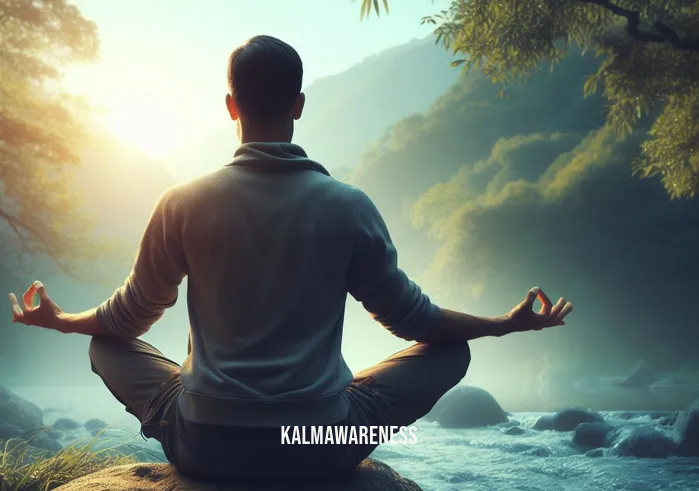
Dissecting the Mindfulness Chart: A Detailed Exploration
As we traverse the landscape of self-awareness and mental well-being, the mindfulness chart emerges as a beacon, illuminating our path. It’s an intricate fusion of art and science, guiding us toward deeper introspection. In this segment, we will meticulously break down the mindfulness chart, shedding light on its multifaceted elements.
Key Elements of the Mindfulness Chart
Emotional Mapping: Akin to a barometer for our feelings, this element allows us to gauge our emotional state at any given moment. Tools such as the mindful harmony app can aid in this introspective journey.
Cognitive Recognition: This revolves around our thoughts and beliefs. By acknowledging and understanding our thought patterns, we can pave the way for more positive mental constructs.
Sensory Awareness: Here, we tune into our five senses, becoming acutely aware of sights, sounds, tastes, touches, and smells. Such grounding techniques are often emphasized in practices like mindful hiking.
Behavioral Patterns: Observing our actions and reactions allows us to identify triggers and responses, offering insights into our behavioral tendencies.
Advantages of Using the Mindfulness Chart
Holistic Self-awareness: By combining emotional, cognitive, sensory, and behavioral insights, the chart offers a comprehensive view of our mental and emotional well-being.
Empowered Decision-making: Recognizing patterns and triggers equips us with the knowledge to make decisions that align with our authentic self.
Enhanced Emotional Regulation: With clarity on our emotional triggers, we’re better positioned to manage and regulate our emotions.
Mindful Living: The chart acts as a constant reminder to stay present, helping us cultivate a more mindful approach to life, similar to the philosophy advocated by mindful martial arts.
Tips for Effective Usage
Regular Updates: Like any tool, the mindfulness chart’s efficacy lies in its regular usage. Frequently updating your chart ensures that it remains a true reflection of your current state.
Seek Guidance: If you’re new to the realm of mindfulness, seeking guidance from experts, perhaps a meditation consultant, can offer valuable insights.
Integration with Other Practices: Combine the chart with other mindfulness practices like meditation made simple for a more holistic approach.
Reflect and Act: Don’t just observe—act. Use the insights from your chart to make informed decisions, be it adopting a new meditation technique or seeking help when facing emotional turmoil.
Real-Life Adaptation
Let’s take a hypothetical situation: Jane, a college student, feels overwhelmed by academic pressures. She starts using a mindfulness chart, documenting her emotions and thoughts. Over time, she identifies a pattern—her stress peaks during exams. Armed with this insight, she adopts keep it simple meditations during exam seasons, resulting in improved focus and reduced anxiety.
Preparing for the Culmination: What’s Next?
We’ve delved deep into the mindfulness chart, unraveling its layers and understanding its profound impact. As we approach our final chapter, we will synthesize everything we’ve learned, understanding how to incorporate this invaluable tool into our daily lives seamlessly.
Stay with us as we head towards the conclusion of this enlightening journey, diving into the practical application and lasting impact of the mindfulness chart in our lives.
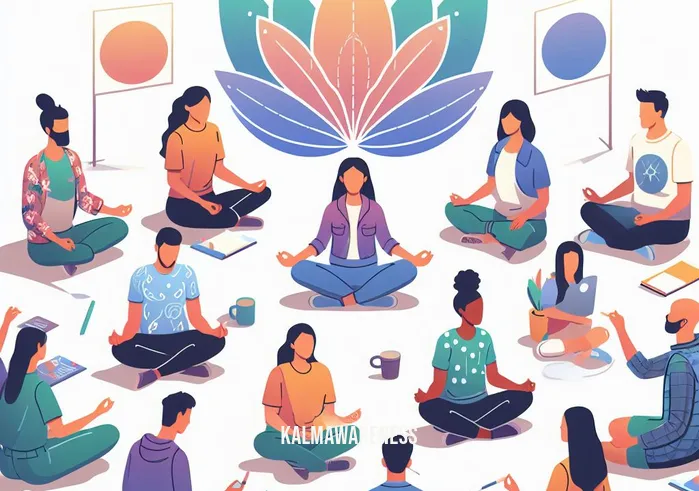
Charting the Future: A Reflective Conclusion on the Mindfulness Chart
As we come to the final bend of our explorative journey on the mindfulness chart, it’s a moment of pause, reflection, and gratitude. What began as an endeavor to understand this transformative tool has evolved into a voyage of self-discovery, enlightenment, and hope.
Glimpses of the Voyage: A Quick Recap
The mindfulness chart is not just any chart. It’s a mirror to our psyche, a guide to our emotions, and a compass pointing us toward mindful living. Through its:
- Emotional Mapping, we’ve learned to recognize and honor our feelings.
- Cognitive Recognition, we’ve delved deep into our thought patterns, seeking constructive ways to channel them.
- Sensory Awareness, reminding us of the joys of being present in the moment.
- Behavioral Patterns, which taught us to acknowledge our actions and understand their triggers.
Beyond the chart, our exploration led us to diverse realms, from the calming techniques of keep it simple meditations to the empowering practices of mindful martial arts. Every step, every link, every quote was a breadcrumb, guiding us towards heightened self-awareness and inner peace.
The Road Ahead: Applying the Insights
But what now? Knowledge, they say, is of no value unless applied. So, as you step into the world armed with the wisdom of the mindfulness chart, here are some steps to consider:
Begin Charting: If you haven’t already, start your own mindfulness chart. Remember, it’s a personal journey, and there’s no right or wrong way to go about it.
Seek Community: Engage with like-minded souls. Platforms like mindful harmony offer a space to share, learn, and grow.
Stay Updated: The world of mindfulness is ever-evolving. Dive into resources like mindful miracle to stay abreast with the latest trends and techniques.
A Call to Continued Exploration
While we wrap up this chapter, remember, the exploration doesn’t end here. Our magazine is brimming with insights, stories, and techniques designed to nurture your soul and enrich your life. Feel free to revisit previous chapters or dive into other exciting topics on our platform.
A Note of Gratitude
Lastly, a heartfelt thank you. Your curiosity, your quest for knowledge, and your commitment to self-growth have made this journey worthwhile. As we always believe, the path of mindfulness is a shared one, and together, we make it richer and more meaningful.
Stay curious, stay hopeful, and until our next enlightening voyage, may your days be filled with peace, joy, and mindful moments.
